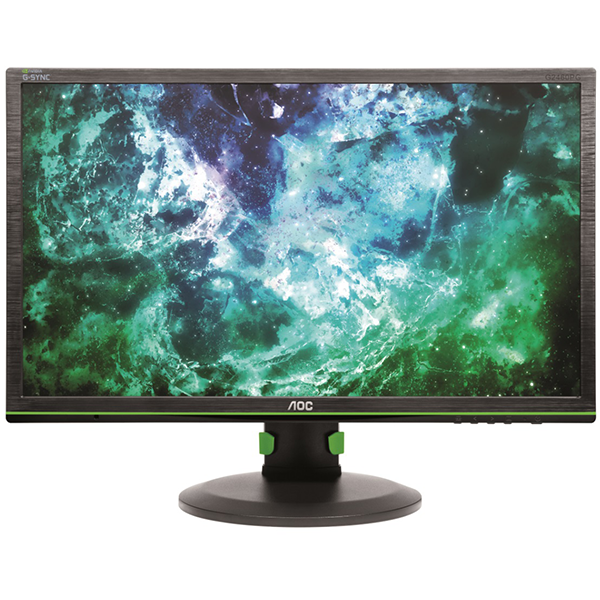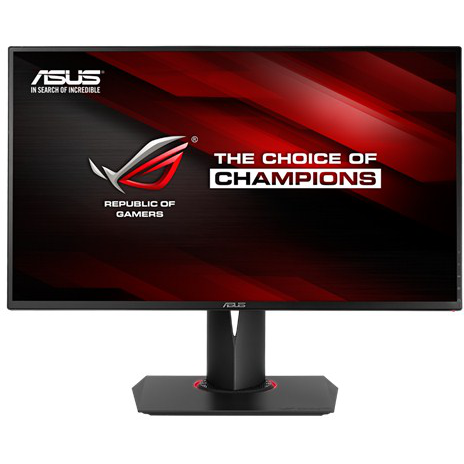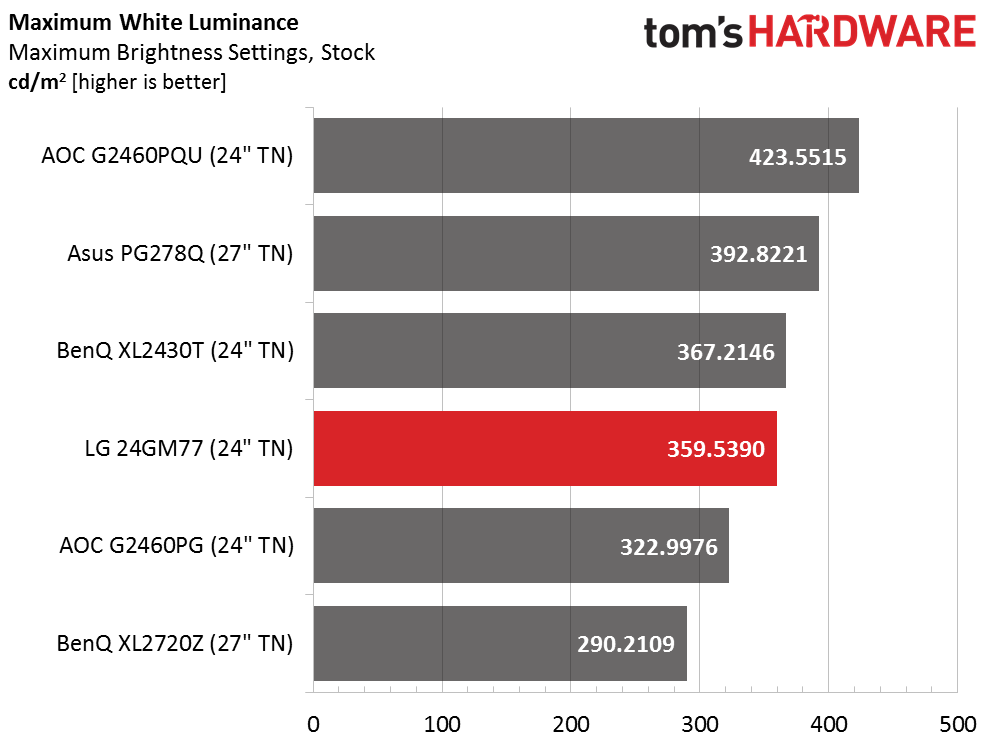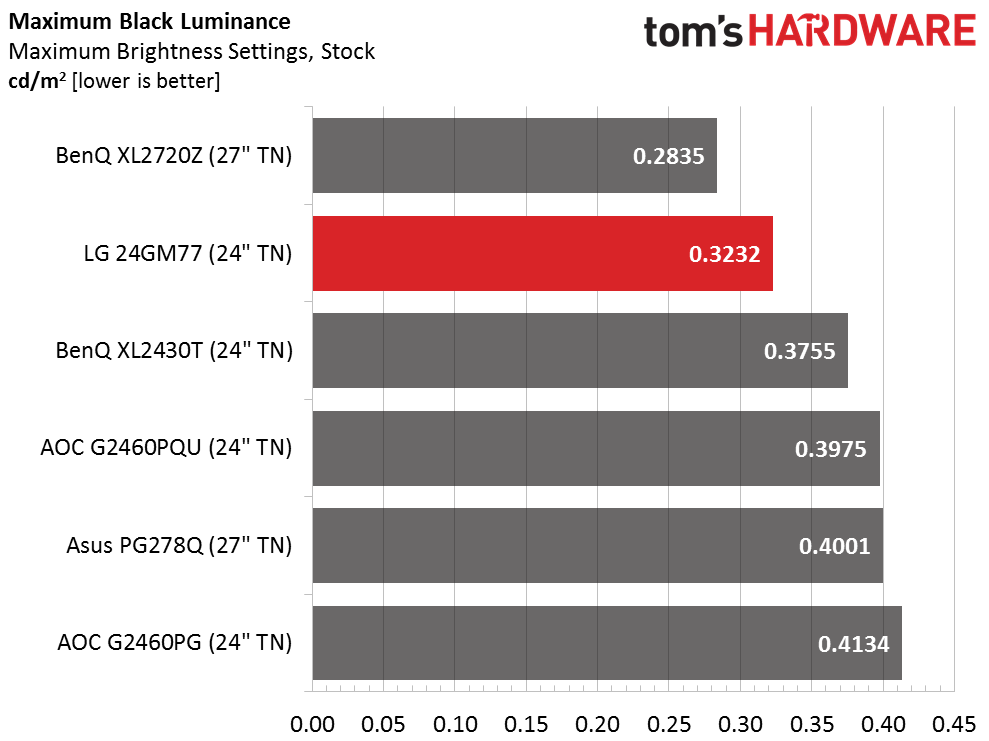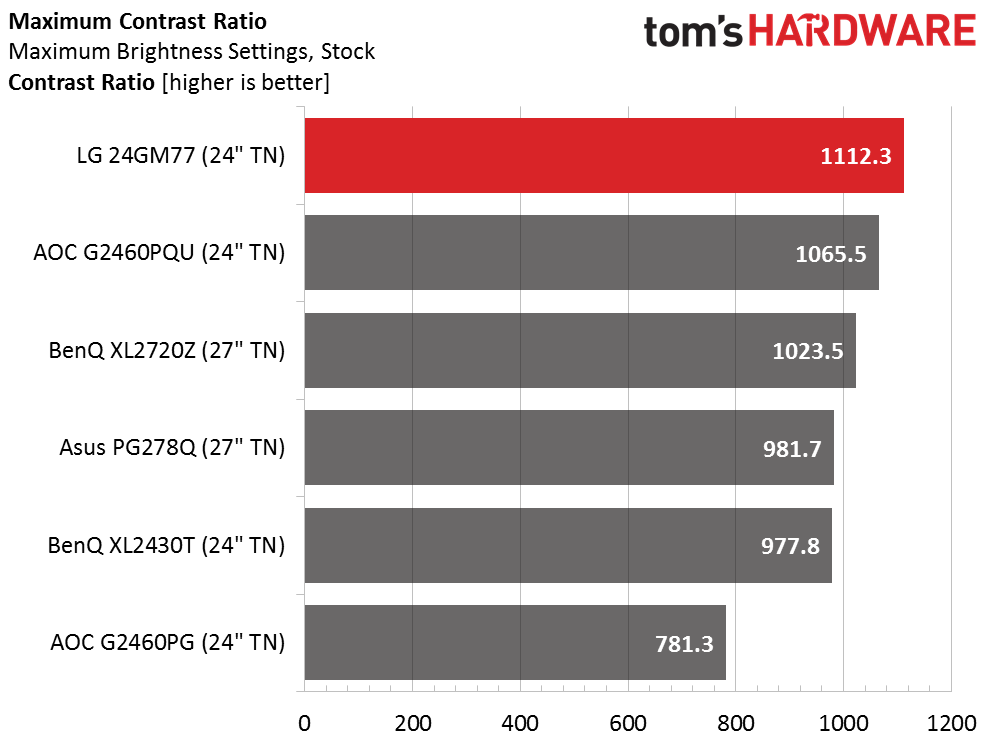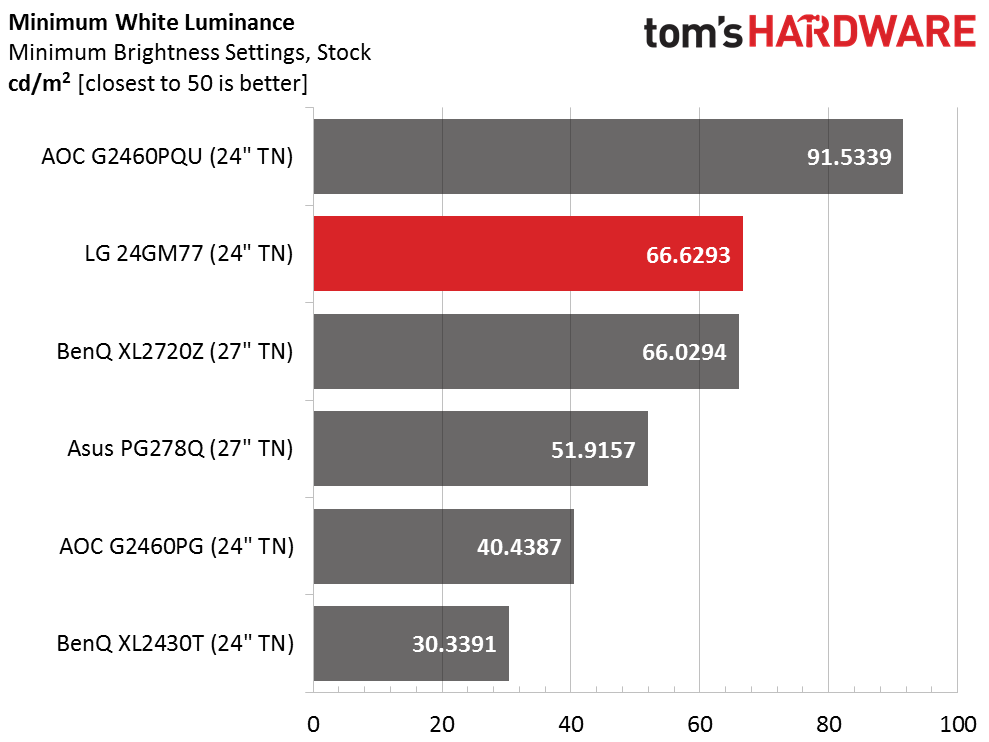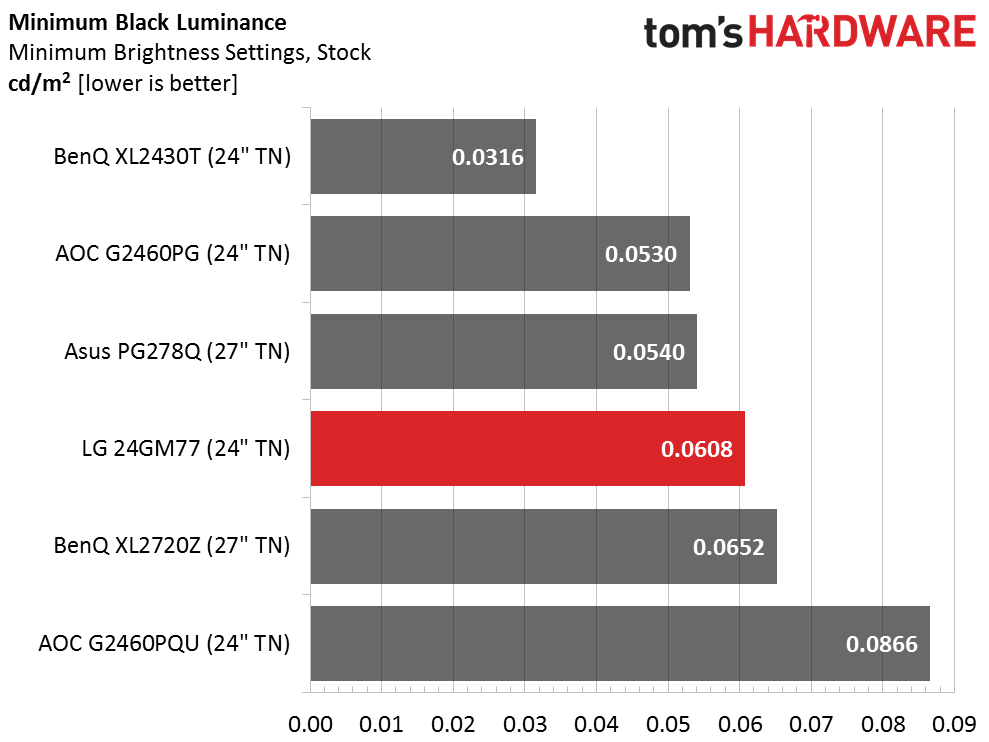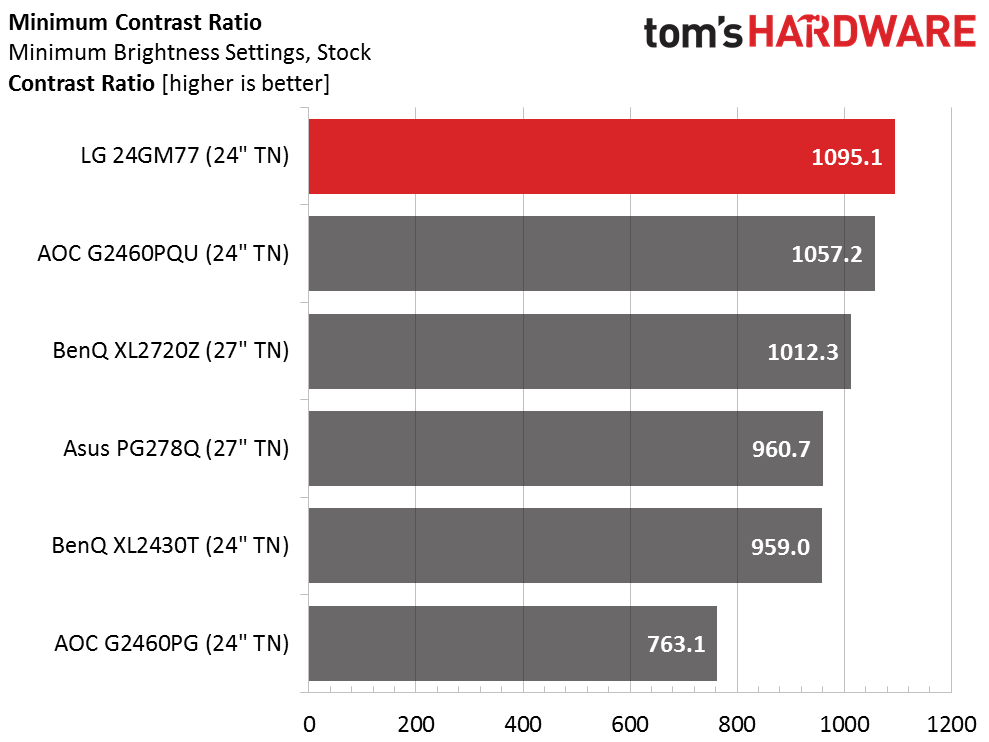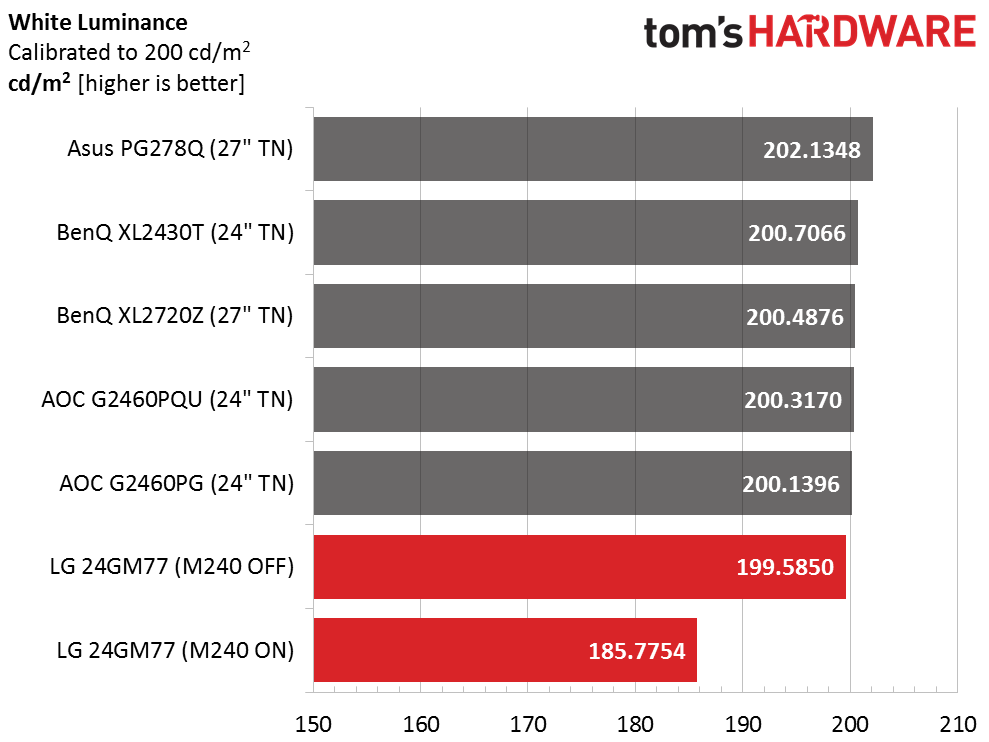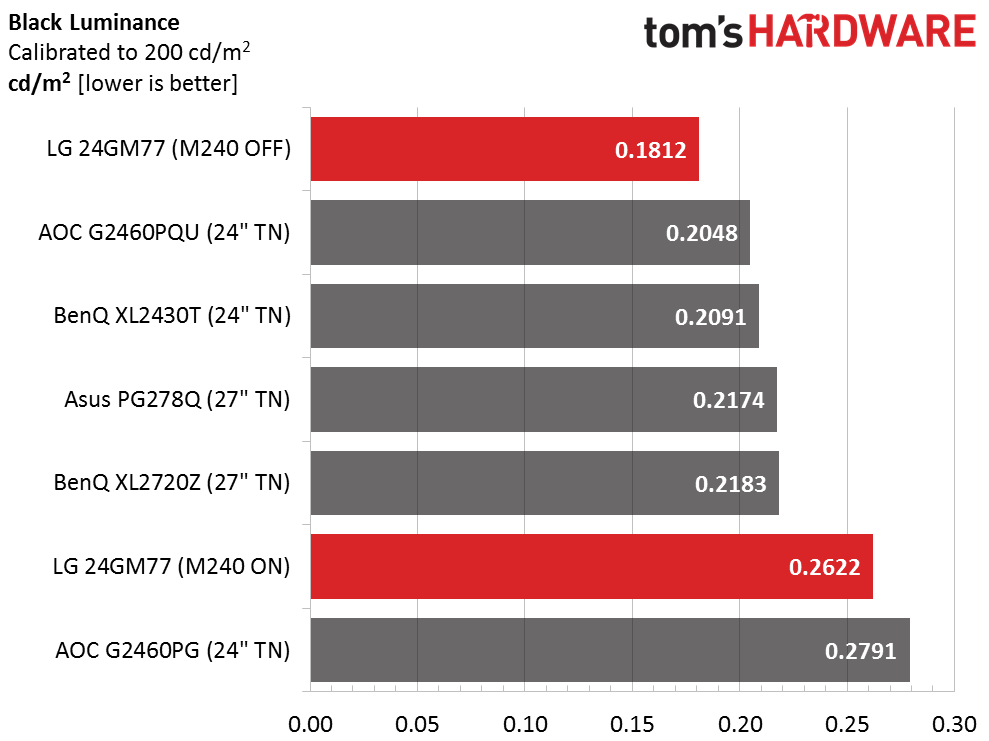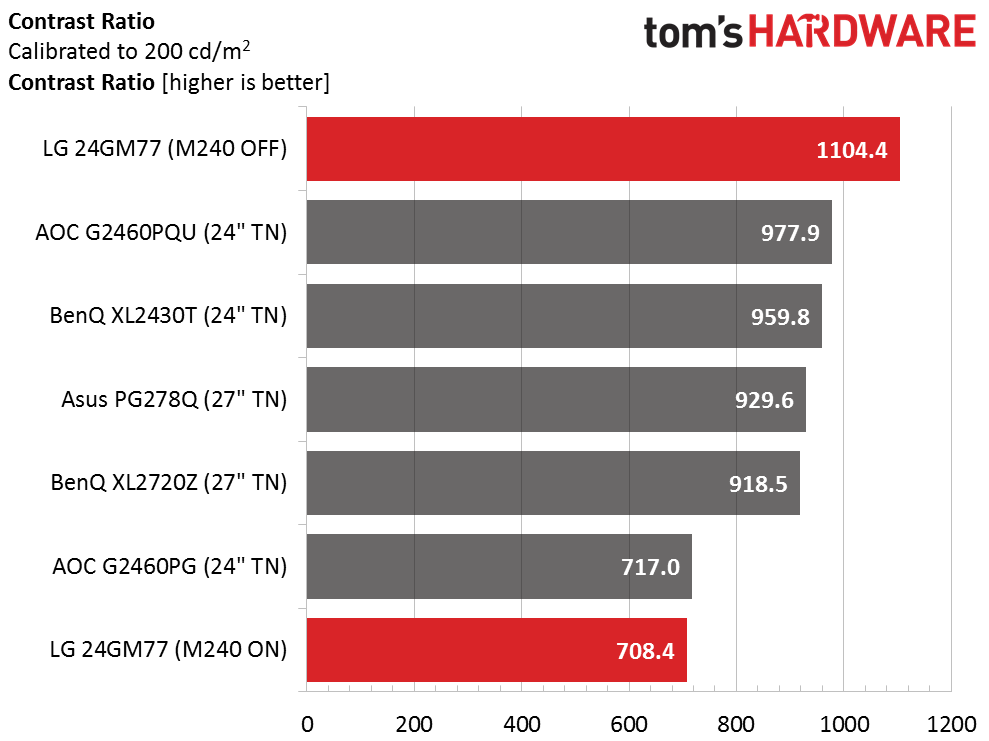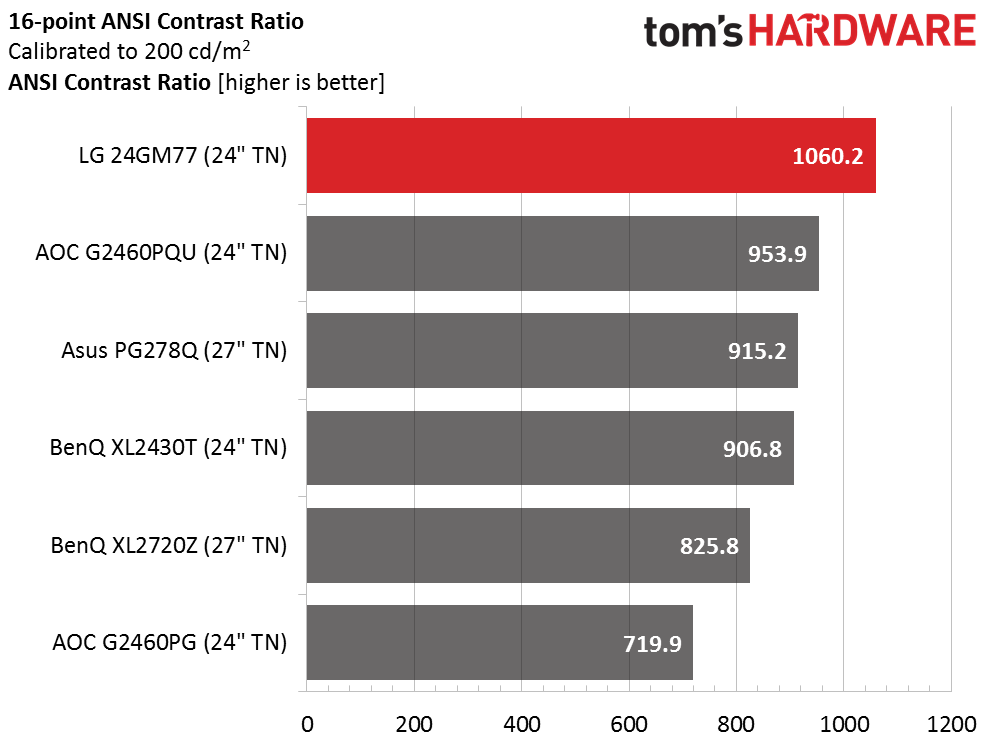LG 24GM77 24-Inch 144Hz Gaming Monitor Review
Why you can trust Tom's Hardware
Results: Brightness And Contrast
To read about our monitor tests in-depth, please check out Display Testing Explained: How We Test Monitors and TVs. Brightness and Contrast testing is covered on page two.
Uncalibrated – Maximum Backlight Level
Today we’re stacking the 24GM77 up against five other high-speed gaming monitors. G-Sync-capable screens include AOC’s G2460PG and Asus’ ROG Swift PG278Q. Representing plain ol' 144Hz displays are AOC’s G2460PQU and two XL-series models from BenQ, the XL2430T and XL2720Z. Every monitor in the group offers motion blur-reduction by way of backlight strobing.
The 24GM77 is fairly bright at 359.5390cd/m2, landing a tad over LG’s claimed 350cd/m2 spec. Is it bright enough to back up the Motion 240 backlight strobe feature? Other screens reduce their output by half or more when using comparable functionality. And LG chooses not to include a pulse-width adjustment like the competition.
For the maximum backlight setting, this is a pretty good black level. With the latest games looking more and more like interactive film, deep blacks are an important facet of the experience.
The 24GM77 handily beats our preferred contrast ratio of 1000:1 and takes the top spot. High contrast is important, regardless of a monitor’s intended use. But in games and movies, we’d place a higher value on that than color accuracy.
Uncalibrated – Minimum Backlight Level
It’s always nice to turn off the lights and experience games and movies in total darkness. When you’re sitting two feet away, a quality image can really make the room melt away and pull you into a virtual world. The 24GM77’s minimum output of 66.6293cd/m2 is a great way to make that happen.
The minimum black level stays solid relative to our comparison group. So far, we’re liking the LG’s image depth a lot. There’s plenty of punch available at all backlight levels, making this a particularly flexible display.
Get Tom's Hardware's best news and in-depth reviews, straight to your inbox.
Minimum contrast drops only slightly from the max number. That consistency we look for in monitors at every price point is clearly evident. LG is using a high-quality panel in a value-priced display.
After Calibration to 200cd/m2
This is where we show you the effect of Motion 240. There is no adjustment for pulse width; it’s either on or off. As you can see, the drop in output is small (less than 15 percent). In fact, you can barely tell the difference when looking at actual content. Motion-blur, however, is quite obviously reduced. We checked out the tests available on Blur Busters and saw improvement in every instance. This is the best-implemented motion-blur reduction we’ve seen.
Unlike other screens, where backlight strobing only affects peak output, the 24GM77 takes a hit in black level too. It roughly doubles when Motion 240 is turned on. Fortunately, the monitor has excellent native contrast to begin with, so image quality is not significantly reduced.
Without Motion 240, calibrated contrast is a class-leading 1104.4:1. When you turn on the backlight strobe, contrast drops by almost 36 percent. The light output penalty is negligible, but you have to decide if the contrast reduction is worth it for a little less motion blur. There’s only one caveat to consider – when you turn on Motion 240, you can’t use the input lag-reducing DSA feature. We’ll show you that data on page seven.
ANSI Contrast Ratio
Though some enthusiasts would consider the 24GM77 a throwback, given its TN panel, the quality is certainly there. We haven’t measured many screens able to crack the 1000:1 barrier for ANSI contrast, regardless of technology. We’d have no trouble using this monitor for any computing task. It’s not just for entertainment.
Current page: Results: Brightness And Contrast
Prev Page OSD Setup And Calibration Next Page Results: Grayscale Tracking And Gamma Response
Christian Eberle is a Contributing Editor for Tom's Hardware US. He's a veteran reviewer of A/V equipment, specializing in monitors. Christian began his obsession with tech when he built his first PC in 1991, a 286 running DOS 3.0 at a blazing 12MHz. In 2006, he undertook training from the Imaging Science Foundation in video calibration and testing and thus started a passion for precise imaging that persists to this day. He is also a professional musician with a degree from the New England Conservatory as a classical bassoonist which he used to good effect as a performer with the West Point Army Band from 1987 to 2013. He enjoys watching movies and listening to high-end audio in his custom-built home theater and can be seen riding trails near his home on a race-ready ICE VTX recumbent trike. Christian enjoys the endless summer in Florida where he lives with his wife and Chihuahua and plays with orchestras around the state.
-
Mike Coberly Reply24" TN, 1080p? No variable refresh? No thanks.
so is it a 24" or 27" display?
LG's website indicates that it is indeed a 24" panel, the title is incorrect in stating it is a 27" -
NinjaNerd56 I got an AOC 27 inch display under $300 recently. No SYNC ability, but a really nice device that's excellent with the games I play.Reply
It's GAME mode is good, and I have done zero adjustment beyond that. If it lasts 2-3 years, then I can 'upgrade' at a much cheaper price to whatever sync de jour display I want.
-
JeanLuc For a gaming monitor to be released these days that does not to come with Gsync or Freesync capability is very short sighted by LG. Would the inclusion of a Freesync enabled 1.2a displayport really have delayed or added considerable costs to this monitor, LG?Reply -
Marcus52 This article - seriously? You can't even get the size of the monitor right. And the price isn't anything special for a 24" 144 Hz TN panel, Asus has had one in that price range (under $300) for years now. In my mind these things make the entire article suspect.Reply
